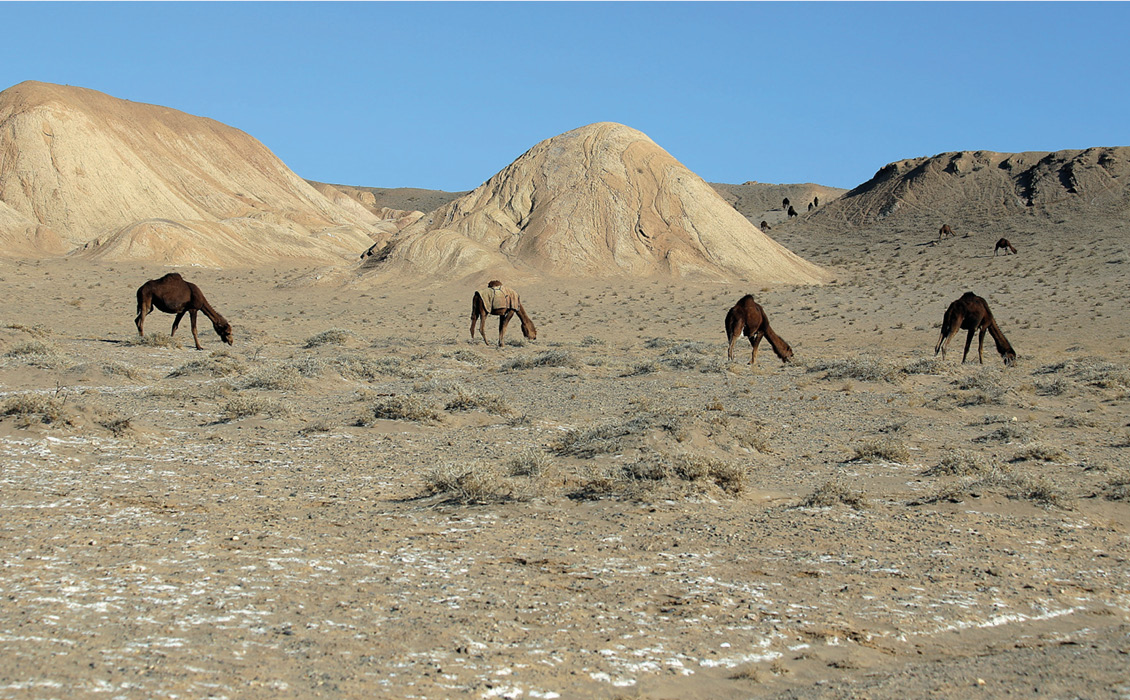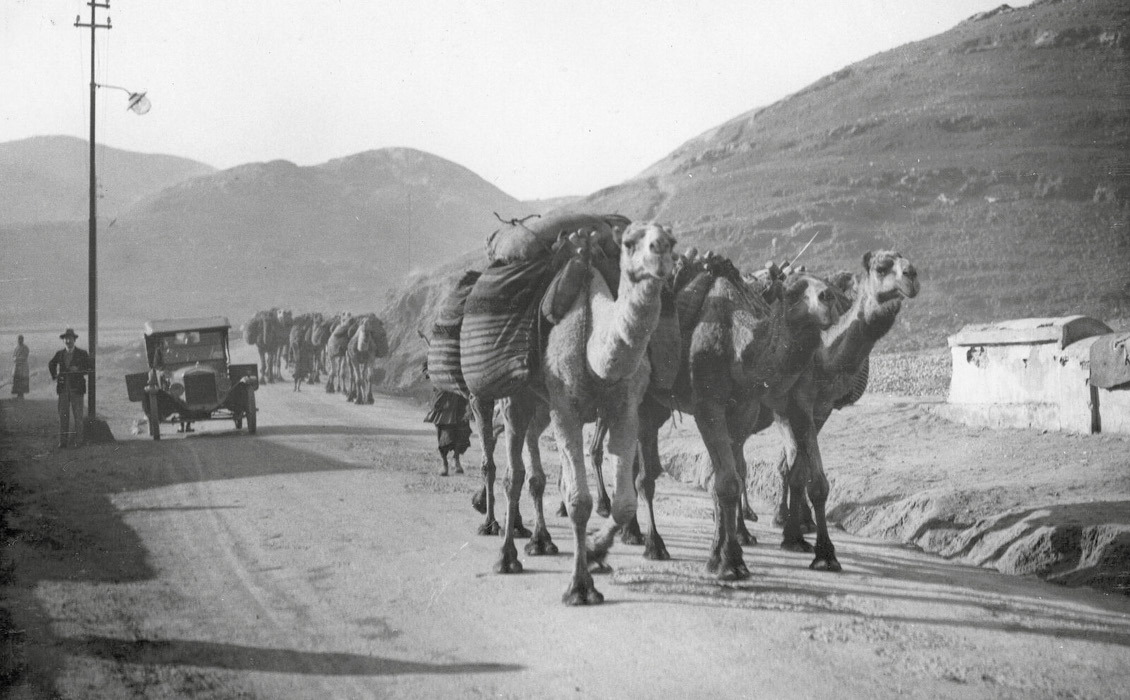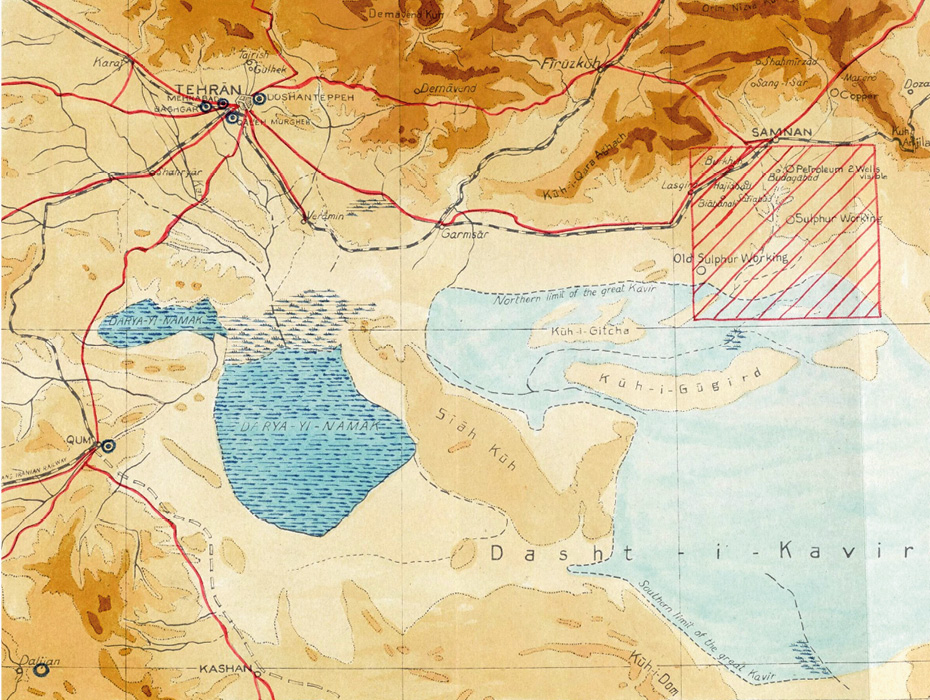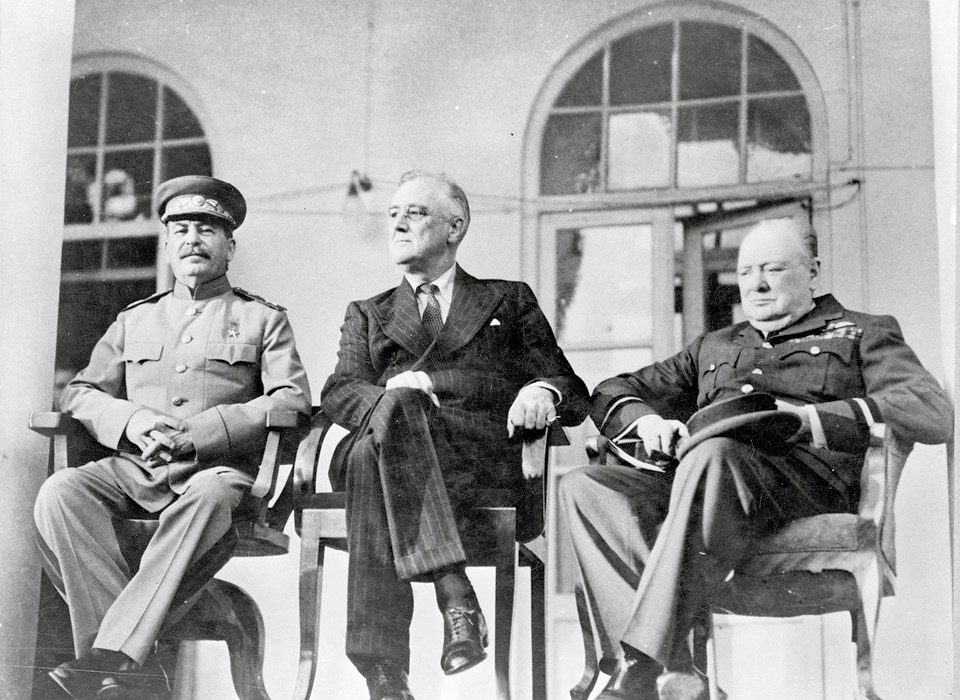 In a region rich in oil, the provinces of northern Iran were considered a good prospect in the late 19th century.The early history of oil in Iran (Persia) is overshadowed by events surrounding the Anglo-Persian Oil Company – known as Anglo-Iranian from 1935 and the forerunner of British Petroleum – which operated the D’Arcy concession for the south-western part of the country. However, there is a less familiar narrative around the provinces of northern Iran which, because of their proximity to the oil-rich southern Caucasus region, were considered promising. At the heart of this story is the mercurial figure of Akaki Khoshtaria, a Russian businessman from Georgia, who was instrumental in securing oil concessions for the area, while the competition over oil rights rekindled the nineteenth-century rivalry between Russia and Great Britain, only now with a new player in their midst: the United States.
In a region rich in oil, the provinces of northern Iran were considered a good prospect in the late 19th century.The early history of oil in Iran (Persia) is overshadowed by events surrounding the Anglo-Persian Oil Company – known as Anglo-Iranian from 1935 and the forerunner of British Petroleum – which operated the D’Arcy concession for the south-western part of the country. However, there is a less familiar narrative around the provinces of northern Iran which, because of their proximity to the oil-rich southern Caucasus region, were considered promising. At the heart of this story is the mercurial figure of Akaki Khoshtaria, a Russian businessman from Georgia, who was instrumental in securing oil concessions for the area, while the competition over oil rights rekindled the nineteenth-century rivalry between Russia and Great Britain, only now with a new player in their midst: the United States.
Origins of the Persian Oil Industry
 Naser al-Din Shah Qajar, 1831–1896. © Nadar, Wikipedia.In the late nineteenth century, the shahs of the Qajar dynasty who ruled Persia were on the look-out for new sources of income, and selling concessions was an easy method of raising extra funds. In 1879, Naser al-Din Shah granted a German-born British subject, Baron Julius de Reuter – founder of the famous news agency – a concession to prospect for minerals. Two wells were drilled in Fars and one on Qeshm Island, but without success.
Naser al-Din Shah Qajar, 1831–1896. © Nadar, Wikipedia.In the late nineteenth century, the shahs of the Qajar dynasty who ruled Persia were on the look-out for new sources of income, and selling concessions was an easy method of raising extra funds. In 1879, Naser al-Din Shah granted a German-born British subject, Baron Julius de Reuter – founder of the famous news agency – a concession to prospect for minerals. Two wells were drilled in Fars and one on Qeshm Island, but without success.
In 1880 the Shah granted a firman (or royal decree) to Hajir Ali Akbar Amin, allowing him to look for minerals in Kavir-i-Khourian, a desert area to the south of the town of Semnan. Amin, described as the ‘custodian of the mines’, was a small-scale producer of sulfur, lead, copper and coal. Although the firman was for ten mines, and the Khourian fold was of some interest as an oil-producing area, production methods were rudimentary, with crude oil being collected from seepages on the ground.
The D’Arcy concession, granted in 1901, formed the basis of Anglo-Persian’s operations in south-western Persia and specifically excluded five northern provinces – Azerbaijan, Gilan, Mazanderan, Astrabad and Khurasan. In 1908, when the company struck oil at Masjidi-Suleiman in Khuzestan province, the future direction of Persia’s oil industry was confirmed. Anglo-Persian built a refinery at Abadan and became a major supplier of fuel oil to the Royal Navy with the result that, in 1914, the British government took a 51% share in the company. In this way, British imperial interests were firmly tied to the future of Persian oil.
The Multi-Faceted Akaki Khoshtaria
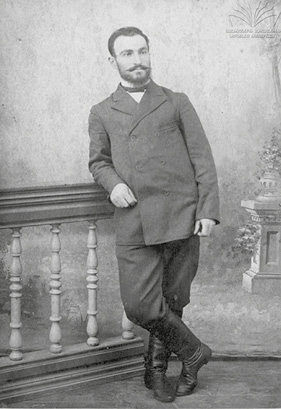 Akaki Khoshtaria (1873–1932). © Alamy.Until then, the center of the petroleum world had been the southern Caucasus, where a number of entrepreneurs made fortunes in the oil industry. Among them was a Georgian businessman by the name of Akaki Khoshtaria, who mixed in the highest circles, counting Winston Churchill and Franklin D. Roosevelt as acquaintances and keeping close links with the ruling shahs and the Russians. He was described as ‘an American-style businessman’, though his start in the industry owed as much to luck as business acumen. One of his oil shipments was caught in a storm and diverted to Turkey, where he sold the cargo at a great profit and was able to invest the proceeds in equipment, thus entering the ranks of the oil producers of the time.
Akaki Khoshtaria (1873–1932). © Alamy.Until then, the center of the petroleum world had been the southern Caucasus, where a number of entrepreneurs made fortunes in the oil industry. Among them was a Georgian businessman by the name of Akaki Khoshtaria, who mixed in the highest circles, counting Winston Churchill and Franklin D. Roosevelt as acquaintances and keeping close links with the ruling shahs and the Russians. He was described as ‘an American-style businessman’, though his start in the industry owed as much to luck as business acumen. One of his oil shipments was caught in a storm and diverted to Turkey, where he sold the cargo at a great profit and was able to invest the proceeds in equipment, thus entering the ranks of the oil producers of the time.
When the British spy, Reginald Teague-Jones, visited Tbilisi in 1922, he stayed at Khoshtaria’s mansion, which was decorated with the heads of a leopard and an elephant ordered from a London taxidermist. Many claims have been made on Khoshtaria’s behalf: that he set up the first railway in Iran, was first to export cars to Iran, owned a monopoly on soap and fish producing, was involved in the wool trade and founded the Georgian navy. He was also a philanthropist, patron of the arts and sponsored students to study abroad. However, it was in the realm of oil concessions that his name first came to the notice of the international oil companies.
In 1916 Khoshtaria was granted an oil concession for the provinces of Gilan, Mazanderan and Astrabad for a period of 70 years. This concession was partly based on a firman granted in 1896 and was generally known as the ‘Khoshtaria concession’. In order to gain a foothold in the northern provinces, Anglo-Persian bought the concession for £200,000 (about £4.3m today) and formed North Persian Oils Limited with Khoshtaria as a shareholder. Although the Persian government canceled the concession, and a Treaty of Friendship between Persia and Russia in 1921 also cast doubt on its legality, Anglo-Persian stuck to its guns and insisted it was still valid.
America Moves on the Northern Provinces
The early 1920s was marked by two American companies – Standard Oil of New Jersey and Sinclair Consolidated Oil Corporation – trying to gain a stake in Persian oil. Since the D’Arcy concession ruled them out of the south-west, their efforts focused on the northern provinces. This was a time of growing interest in overseas oil development, with US firms being encouraged by Secretary of State Hoover to seek new sources of petroleum around the globe in pursuit of the socalled ‘Open Door’ principle.
In August 1920 US firms were invited to apply for concessions in northern Persia. Standard took up the challenge and opened talks in Tehran, but problems soon emerged. Sinclair declared an interest, immediately presenting Standard with a rival bid and ensuring that the state department could not favor one firm over the other. That effectively neutralized Washington’s support at a time when London was pushing the interests of its protégé, Anglo-Persian, which was using the Khoshtaria concession to block its rivals from the northern provinces.
After the Soviet government blocked the export of oil through its territory, the situation became impossible for Sinclair, and the company withdrew from the concession in 1925. Standard followed suit two years later, leaving the field clear for Anglo-Persian in the south-west, but the status of the northern provinces was still debatable. In 1937 the Amiranian Oil Company, a US firm based in Delaware, gained a 50-year concession for northern and eastern Iran, but withdrew two years later, citing political and logistical problems, while Anglo-Persian argued that the concession infringed the Khoshtaria concession.
The Russian Connection
All the while, the Kavir-i-Khourian firman was in contention and, again, the hand of Akaki Khoshtaria was apparent. When Hajir Ali Akbar Amin died in the late 1890s, the rights under the firman had passed to his heirs, which presented Khoshtaria with an opportunity to buy them up and exploit the concession for his own ends. There were several heirs, and it is likely that Khoshtaria purchased most of their shares, visiting the town of Semnan to conclude his deals before a local mullah. As a British report observed, “It must be borne in mind that more than one of the co-heirs were people of little education who could no doubt be fairly easily persuaded to part with their share of the rights for a sum in cash down.” However, Khoshtaria did not succeed to obtaining the original document, which was held by the principal heir.
At that time, the concession itself was unremarkable, having been operated in a primitive fashion for many years but, as rivalries in the petroleum world became more intense, it came under great scrutiny. Khoshtaria’s dealings provoked much debate, especially since his name was already linked with the northern provinces. Perhaps more significant, and of some concern to the British looking on, were his connections with the Soviet leaders of Russia, and the Russian Bank. It is not clear whether Khoshtaria was acting on his own account or as agent for the Russians, but the thrust of his plans soon emerged.
In 1924, the Majlis decided to regularize various claims for oil rights throughout the country and, during the process that followed, only one out of 23 requests was registered – the Kavir-i-Khourian concession. It was, according to a British observer, an “extraordinary result” designed to bolster the legality of the 1880 firman and secure the original document; whatever the explanation, the ministry of public works sold the concession on to Khoshtaria, who transferred it to the Russians.
Despite protests from both the heirs to the original concession and Anglo-Persian, which regarded the area as within the D’Arcy concession, a syndicate of Iranian and Russian shareholders known as Kavir-Kurian was formed to develop the concession. Khoshtaria, who was on its board, was highly active on behalf of the new company and persuaded the Russian Bank to provide most of the capital. At one stage Calouste Gulbenkian (GEO ExPro Vol. 16, No. 1) engaged in talks about a joint venture with the Russians in northern Persia, and Khoshtaria offered a holding in the company to French and Italian interests, resulting in a party of geologists being sent to examine the concessionary area. Their report was unfavorable, although a prominent Soviet geologist took a different view. Between 1925 and 1932, two wells were drilled without any success and the concession remained unproductive at the outbreak of World War II Overall, the concession suffered from a lack of funds, despite the fact that operations were funded in part by the proceeds from the sale of the original ‘Khoshtaria concession’ and with Russian money. Matters were complicated by the involvement of the court minister, Abdul Husayn Khan Timurtash, who fell out of favor with Reza Shah Pahlavi in 1930, and the untimely death of Khoshtaria in Paris two years later at the age of 59.
Postscript
Disputes over the Kavir-i-Khourian concession played out for many years. During World War II Semnan became a garrison town in the Russian zone, and the oil field was closed off. As the Russians had long regarded northern Persia to be within their sphere of influence, they expected to receive favorable treatment for oil concessions. However, despite a Russian minister, Sergey Kavtaradze, visiting Tehran in September 1944, their overtures were rebuffed. As it emerged that their move was part of a wider strategy to control the northern provinces, the deputies of the Majlis banned oil concessions being granted without their consent. This paved the way for the nationalization of the D’Arcy concession in 1951; and the architect of both reforms was none other than Anglo-Iranian’s nemesis, Mohammad Mossadegh.
Quentin Morton’s latest book Masters of the Pearl: A History of Qatar is now available from all good booksellers.
Further Reading on the History of Oil in the Middle East
The Land That Oil Forgot: Palestine, 1913–1948
Michael Quentin Morton
Israeli premier Golda Meir once said, “Moses took us 40 years through the desert in order to bring us to the one spot in the Middle East that has no oil”. We look at the history of oil exploration in this region.
This article appeared in Vol. 17, No. 1 – 2020
The First Discoveries of Oil in Saudi Arabia
Michael Quentin Morton
In the 1930s, Chief geologist at Casoc and Aramco expat, Max Steineke revolutionised hydrocarbon exploration in the Middle East using structure drilling – which led to some of the first discoveries of oil in Saudi Arabia.
This article appeared in Vol. 15, No. 1 – 2018


